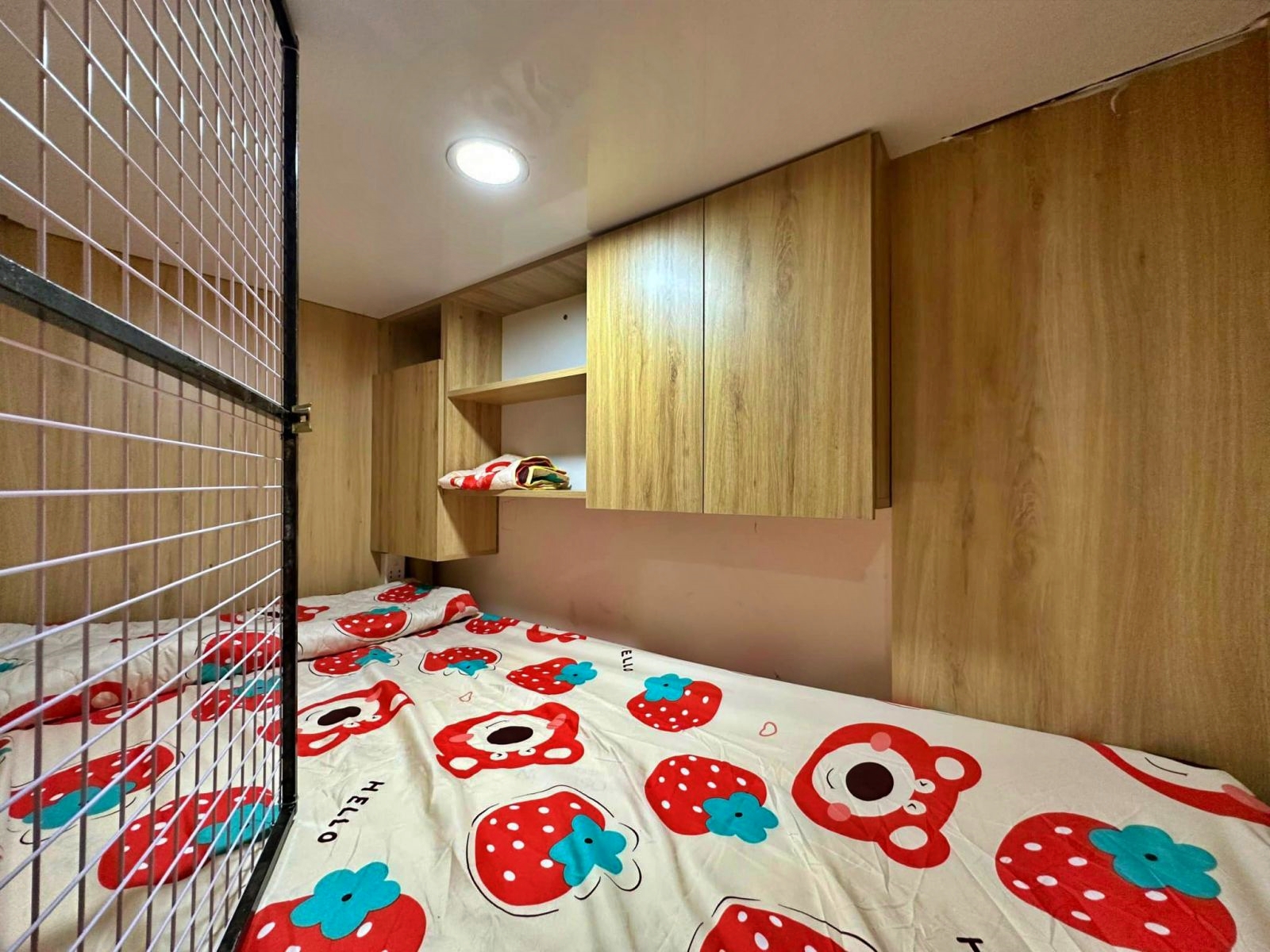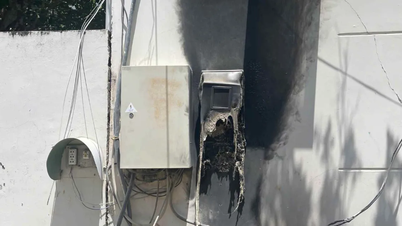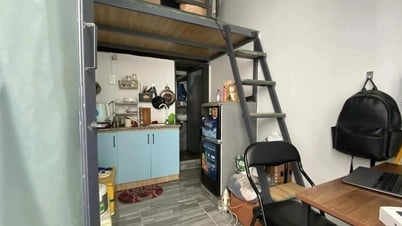Stacked "sleeping boxes"
In mid-November 2023, the Ho Chi Minh City Department of Construction reported to the Ho Chi Minh City People's Committee on statistics showing that the area had 58 constructions with 2,165 "sleeping boxes" that posed potential risks, difficulty in escaping, and risked lives in the event of an incident.
Since 2021, this type of cheap rental bedroom has flourished in Ho Chi Minh City. This model does not have fire prevention regulations, so management and inspection are still difficult.
Through inspection, in Ho Chi Minh City, there are 67 individual houses that have successfully organized the business of sleeping boxes. However, the authorities have only inspected 58 buildings with nearly 2,200 sleeping boxes, 9 buildings have been closed by the owners and have not been inspected.
Of which, this type is built the most in Go Vap district with 15 projects divided into 474 sleeping boxes, Phu Nhuan district has 9 houses divided into 335 sleeping boxes, Binh Thanh district has 243 sleeping boxes built in 6 projects...
The 2-2.2 m wide sleeping boxes are rented for 1.8-2 million VND per month. Most of the buildings are high-rise individual houses that are divided by the owner into rooms with enough wooden or plastic beds, without requiring construction or repair.
The Department of Construction assessed that this type of housing has a large number of people concentrated in a narrow space, which does not ensure fire safety conditions, potentially posing a risk to life in the event of a fire. From there, this agency recommended that the city government direct districts to focus on inspection and handling to ensure safety.

"Sleeping boxes" stacked on top of each other in cramped conditions pose a great risk of fire and explosion.
Nguyen Van Cuong, 22, a resident of District 10, a senior student at a university in Ho Chi Minh City, said he had lived in a sleep box for 2 years for 2 million VND/month. Although he knew the space was cramped, Cuong had to accept it to save on costs.
"It is very difficult to find a room in the center of District 1 with such convenient facilities at such a low cost. A fully furnished room in the same area will cost at least 6-8 million VND/month in rent. Sleep box is a reasonable choice for those who want to save as much as possible on living expenses," said Mr. Cuong.
Ms. Nguyen Thi Hoa, 20 years old, from Tien Giang province, has rented a sleeping box on Nguyen Gia Tri street, Binh Thanh district, Ho Chi Minh City for 2 years. She said that since she moved here, she has not paid attention to fire safety issues. However, when the authorities inspected, Ms. Hoa found that her place of residence was not safe, "realizing that the only escape route was the stairs" so she "was worried when there were 8 sleeping boxes on one floor, equivalent to 8 people, while on the first floor there were many motorbikes".
Resolutely check and handle
It is known that when giving comments on the Draft of Vietnam Standards for Individual Housing, the Ho Chi Minh City Real Estate Association said that there is currently a lack of regulations from the Ministry of Construction on minimum standards for housing, especially minimum standards for rental rooms in rental housing areas. Therefore, it is very necessary to issue regulations on standards for rental rooms because the number of rental rooms in rental housing areas is very large nationwide.
Accordingly, HoREA proposed that the Ministry of Construction consider and decide that the minimum area of a rental room is 10m2 (or maybe 12 - 15m2), the usable area is not less than 5m2 (or maybe 6 - 7.5m2) for one person to ensure suitable living space.
Sharing about the "sleeping boxes", a representative of the Fire Prevention and Rescue Police Department (PC07), Ho Chi Minh City Police said that this is a type of rental housing with a new model of "sleeping boxes", small area to serve workers, students... The common feature of these "sleeping boxes" is that the area is "super small", not ensuring fire safety.
This type is quite dangerous, has a high risk of fire and explosion, and seriously violates fire prevention and fighting regulations on escape routes and escape corridors. In particular, the location of the "sleeping boxes" is very far from the escape route.
“The "sleeping boxes" are often arranged in a small room, making it difficult to detect and escape when a fire breaks out. In addition, the technical conditions for installing fire prevention and fighting systems in these buildings are not guaranteed, and when a fire breaks out, it will be a huge disaster. Therefore, this model, during its operation, is not closely monitored and inspected by the management agency regarding construction and fire prevention and fighting, which is very dangerous," said a representative of PC07.
Regarding the handling of the “sleeping box” model, a leader of Go Vap District Police said that the unit had fined and forced the demolition of 13 high-rise buildings and two coffee shops that divided rooms into sleeping boxes. When checking, some houses with an area of 20-30 square meters were divided into 20-25 rooms using plywood walls, mica panels, and unsafe electrical connections. Dozens of motorbikes were parked on the ground floor but there was no suitable fire prevention and fighting equipment.
These sleeping boxes are located near universities and suburban areas to attract students and workers to rent them for 1.8-2 million VND per month. After being forced to dismantle, the police inspected them again to ensure compliance.
Mr. Dang Minh Nguyen, Vice Chairman of Binh Thanh District People's Committee, informed that since mid-October until now, Binh Thanh District has forced the demolition of 42 business chains with hundreds of sleeping boxes in the area. Among them, there is a 5-storey house divided into 125 sleeping boxes on Nguyen Thien Thuat Street, Ward 14, which was discovered by the inspection team to have a series of errors such as no escape routes, equipment, and fire protection system.
“For houses divided into rooms for rent with suitable areas, local authorities ask the landlord to fix, remove rooms, partitions, and add fire prevention equipment. For rooms that are too small, the local authorities are forced to dismantle them. The handling depends on the actual situation of each building to ensure fire prevention,” said Mr. Nguyen.
Source









































































































Comment (0)